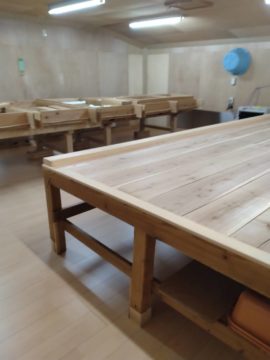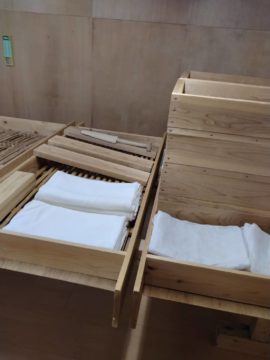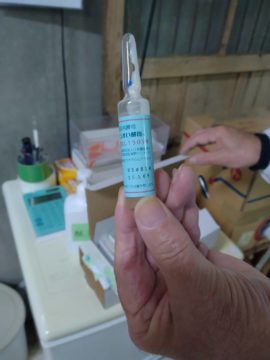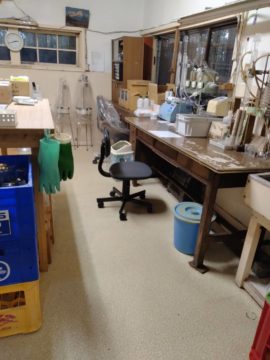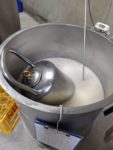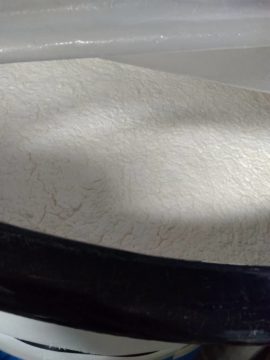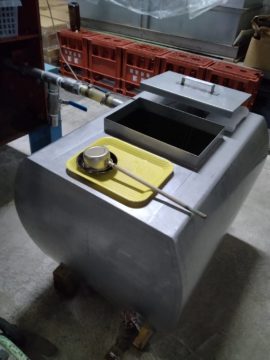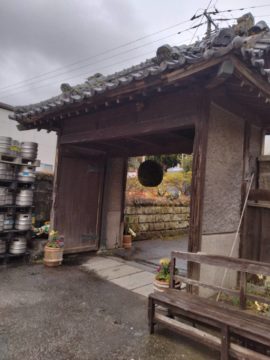【発酵ソムリエ】竹岡酒造さんは、最近焼酎蔵も所有している和蔵酒造さんだった!
岐阜県、静岡県が医療ひっ迫宣言、だから東に行くことにして、たどり着いた冨津
竹岡酒造さんは、元々池田家がつくる日本酒蔵。その杜氏と蔵人が夏の間は、原家がもっていた焼酎蔵で、焼酎を醸しています。
インバウンドなら「焼酎」に興味があると思いますが、今は冬なので仕込みの様子を見るなら「日本酒蔵」へ。
白衣に着替えて、本格的な酒蔵見学というだけでなく、普段見れない「室」などにも入れていただけました。
酒造好適米千葉県の「総の舞」やや小ぶり。早くできます。
他の地域のお米も使いますが、日本酒と焼酎は原材料はもちろん、菌なども違うのがよくわかりました。
竹岡酒造は、新潟の杜氏のDNAを踏襲しますが、秋田の糀(もやし)を使っています。
こちらは、食べると甘い。焼酎は、黒麹ですでにクエン酸発酵があり、酸味を感じます。
#発酵ソムリエ #焼酎と日本酒 #室まで入れた #糀の違い #酵母の違い
リンゴのようなサッパリとした吟醸香は、「カプロン酸エチル」・・・秋田酵母等を使っています。冷たくしていただく日本酒。
バナナのような濃醇な甘さを思わせる吟醸香は、「酢酸イソアミル」に由来します。
酸味を活かすお燗にぴったりな日本酒。硬質の水の方がむしろ燗にいいと池田さん。
伝統的な吟醸香でもある酢酸イソアミルは、「きょうかい9号」や「きょうかい14号」といった古くから存在する酵母によって多く生成されるものです。
協会酵母のアンプルを見せていただき、乳酸菌のタンクも拝見。
#発酵ソムリエ #焼酎と日本酒 #室まで入れた #糀の違い #酵母の違い
IWCでも入賞している「 竹岡 純米大吟醸」2022年シルバーでした。
また、酒造にいくまでの道にグランピングのホテルもあり、冨津はインバウンドに人気です。
とはいえ、東の日本酒は、日本食品の商品はすべて東アジアを中心に東日本大震災以降信用されていないので越境ECは困難な部分があります。
イベントや単会での成功はあるようです。
試飲もさせていただきました。なんと、絞ったばかりのあらばしり。生酒。
チロシンが多い酒粕は黒くなってしまい、販売に適さないとか。
夏なら、焼酎も見学できるとのこと。熊本などの米焼酎は、かなりお高いのに、日本酒はファーストクラスで販売する機会もありません。
やはり、焼酎の「貯蔵」と「熟成」にもう少し研鑽する余地があるのでしょうか?とのこと。
酒の発酵カードゲームでは一番いいカードを「熟成した酒」にしているため、海の底に沈める、洞窟に寝かせる・・・などのお話も興味をもって
お伺いしました。将来が楽しみですね。
#発酵ソムリエ #焼酎と日本酒 #室まで入れた #糀の違い #酵母の違い
Takeoka Shuzo was originally a sake brewery owned by the Ikeda family. During the summer, the toji (master brewer) and the brewery workers brew shochu (Japanese liquor) in the shochu brewery owned by the Hara family.
If you are an inbound visitor, you may be interested in the shochu, but since it is winter now, visit the sake brewery to see the brewing process in action.
We changed into white coats and were allowed not only a full-scale tour of the brewery, but also into “rooms” that we could not normally see.
Sake brewer’s rice, “Fusa-no-Mai” from Chiba Prefecture, is a little small. It can be made quickly.
Rice from other regions is also used, but I could see that sake and shochu have different raw materials as well as different bacteria.
Takeoka Sake Brewery follows the DNA of Niigata’s toji, but uses Akita’s malt (moyashi).
This one is sweeter when eaten. The shochu has already undergone citric acid fermentation with the black Koji (Awamori)malt, giving it a sour taste.
The crisp, apple-like ginjo aroma is “ethyl caproate” – Akita yeast, etc. Sake served cold.
The ginjo aroma, reminiscent of a banana-like rich sweetness, comes from isoamyl acetate.
This sake is perfect for warming up to take advantage of its acidity. Hard water is rather better for heating, says Mr. Ikeda.
Isoamyl acetate, which is also a traditional ginjo aroma, is produced in large quantities by long-established yeasts such as Kyokai No. 9 and Kyokai No. 14.
We were shown an ampoule of Kyokai yeast and also saw a tank of lactic acid bacteria.
It was Takeoka Junmai Daiginjo 2022 Silver, which has also won a prize at the IWC.
There is also a glamping hotel on the road to the sake brewery, and Tomitsu is popular with inbound visitors.
Nevertheless, there are some difficulties in cross-border EC for sake in the East because all Japanese food products are not trusted after the Great East Japan Earthquake, especially in East Asia.
There seems to be some success with events and single meetings.
We also had a tasting. What a freshly squeezed arabashiri. Fresh sake.
Sake lees with high tyrosine content will turn black and not suitable for sale.
We were told that in summer, we could also visit the shochu (rice shochu) brewery. Rice shochu from Kumamoto and other places is quite expensive, but sake has no chance to be sold in the first class.
After all, is there room for a little more study in “storage” and “aging” of shochu? he said.
In the sake fermentation card game, the best card is the “aged sake,” so I was interested to hear about submerging the sake at the bottom of the ocean, laying it down in a cave, etc.
I was very interested in what you had to say. I am looking forward to the future.



